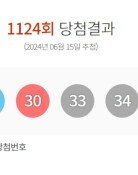Sky to be decorated by meteors on Jan. 3
Sky to be decorated by meteors on Jan. 3
Posted December. 22, 2016 07:08,
Updated December. 22, 2016 09:21

The Korea Astronomy and Space Science Institute announced on Wednesday the major astronomical phenomenon, including the meteor shower in January, will be observable in Korea throughout the next year.
On the night of Jan. 3, Koreans can enjoy “Quadrans Muralis,” one of the three largest meteor shows in the world. The radian spot, which meteors start to fall, is located inside the Cowherd. The best time to see the meteors will be around 11 p.m. on Jan. 3. People can also observe about 120 meteors in an hour at pitch-black dark areas where no light can be found and the Milky Way can be seen. For those who missed the January meteor shower, watch out for the Orion meteor shower, which can be observed every October. The best time for October this year will be after 12 a.m. on Oct. 22, 2017.
In the morning of March 10, the periodic Comet Encke, which returns approximately every three years, will pass the perihelion – the point in its orbit when a comet is nearest to the sun. Those who live in Korea cannot observe Comet Encke pass the perihelion, but can still get a glimpse with an astronomical telescope in the afternoon sky till late February.
Partial lunar eclipse will occur on Aug. 8 in Asian, African, European, and Oceanian regions. In Korea, the eclipse can be observed with naked eyes. In Seoul skies, the eclipse will start around 2:22 a.m., hit the peak around 3:21 a.m., and continue until 4:19 a.m.
kyungeun@donga.com







